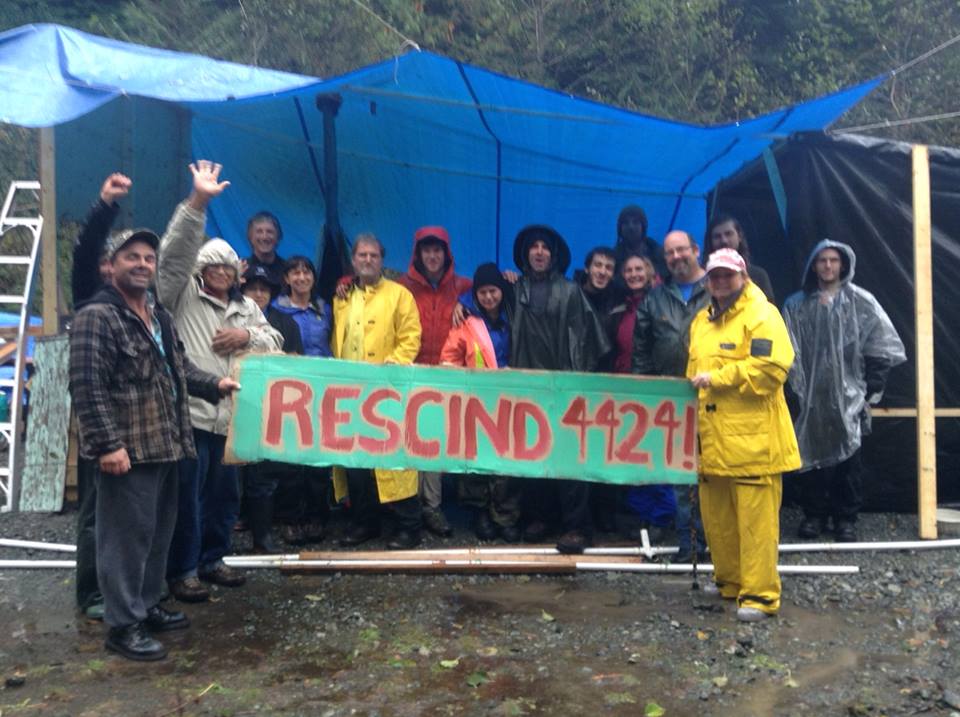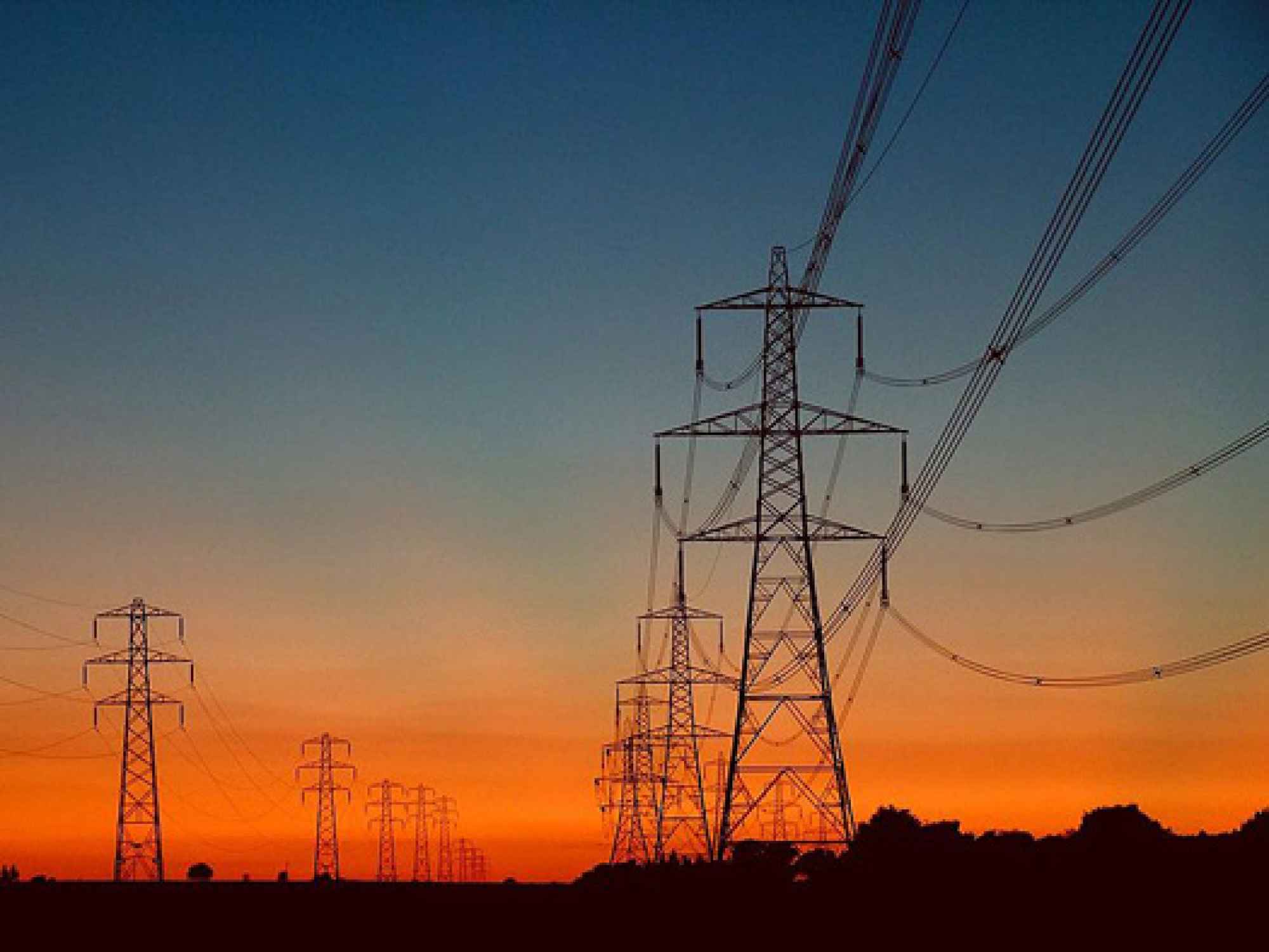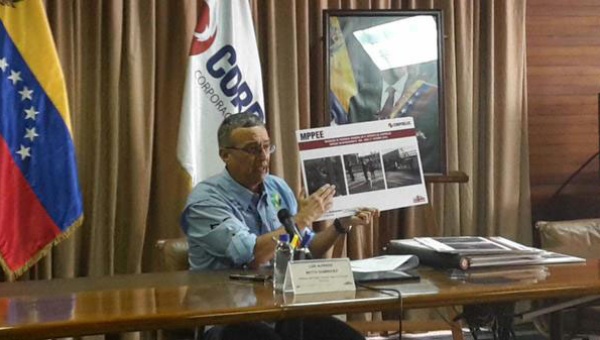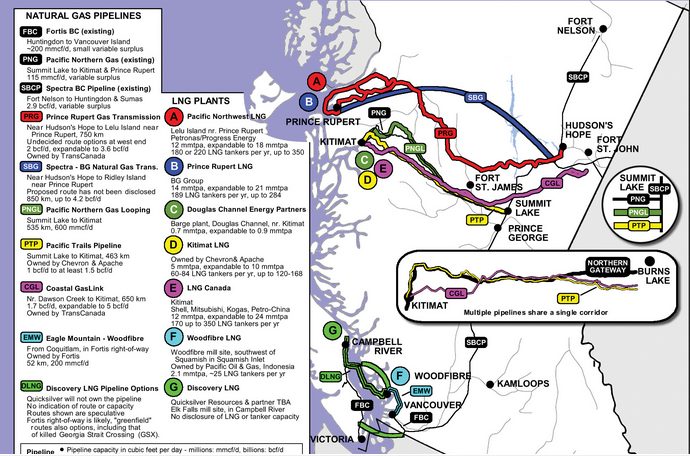by DGR Colorado Plateau | Dec 11, 2015 | Indigenous Autonomy, Obstruction & Occupation
By Survival International
The Baram dam, which would would have flooded 20,000 tribal people from their homes in the Malaysian state of Sarawak, has been shelved following years of protest.
Sarawak’s Chief Minister Tan Sri Adenan Satem announced recently that the decision to put the dam on hold was out of respect for the views of the affected communities, adding: “If you don’t want the dam, fine. We will respect your decision.”
The tribespeople whose homes and forests were to be flooded by the dam had been protesting and blockading the dam site for two years. They welcomed the news but insisted that the dam should not just be put “on hold until further notice,” but that assurances must be given that the dam will never be built.
They are also calling for the return of the land that was acquired for the dam site and for logging permits in the area to be revoked.
Many observers are skeptical at the governments sudden apparent wish to respect the wishes of tribal communities. Their rights to their land and to say no to logging, palm oil plantations and mega-dams have not been so readily recognized in the past. There may be more economic reasons why the dam is no longer considered viable – Sarawak’s existing dams can already provide more power than the state needs.
The tribal people affected by the dam, from the Kenyah, Kayan and Penan communities, have fiercely opposed it from the start. They are acutely aware of the difficulties facing those who were evicted to make way for other dams. They are struggling to hunt and gather, or to grow enough food on the small plots of land provided for them.
During the blockade against the Baram dam Lenjau Tusau, the elderly headman from Long Makaba village, reflected the courage and dignity of the protesters saying: “We will not leave. Our life is here, our culture. The land, rivers, and rocks belong to us.”
The Baram dam was part of a series of twelve hydroelectric dams to be built by the Sarawak government. In 2008, a document was leaked on the internet revealing plans by the state government to build these dams, despite having no market for the electricity they will produce.
Many local, national and international organisations, including Survival, have been campaigning against the plan to build dams in Sarawak for years. Hundreds of Survival supporters have written to the Sarawak state government protesting against the dams, logging and plantations. Survival is calling on the Sarawak government not to allow any developments on the lands of its tribal peoples without their consent.

by DGR News Service | Nov 17, 2015 | Biodiversity & Habitat Destruction, Obstruction & Occupation
Bobby Arbess aka Reuben Garbanzo / Friends of Carmanah/Walbran
Sixty years of logging have left only five percent of the primary low-elevation ancient temperate rainforests of Vancouver island remaining. These are some of the world’s most biologically productive forests, attaining higher levels of plant biomass than any ecosystem on earth. The logging industry liquidated the vast majority of these diverse native old-growth forest ecosystems, replacing them with even-aged monoculture tree plantations.
In 1991, 78 days of civil disobedience successfully halted 16 kilometres of scheduled road development through the last, expansive roadless ancient forest wilderness of the Walbran Valley on south Vancouver island. The Road Stops Here campaign combined prolonged tree-sits, road blockades, office occupations, street theatre, dramatic banner hangings, international support and massive public pressure to protect the land a few kilometres upstream from Canada’s iconic Pacific Rim National Park/West Coast Trail. This area is now known as ‘ground zero’ in British Columbia’s ancient forest movement, and a new battle is heating up.
The 16,000 hectare Carmanah/Walbran Provincial Park established in 1994 was a bittersweet victory for environmental activists who fought to save the valley’s ecologically outstanding ancient forests. The park boundaries were drawn up at a roundtable of stakeholders dominated by transnational forest companies owning timber licenses in the valley. The largest and oldest western redcedar trees in the world live at the confluence of three main branches of the watershed, at the heart of the wilderness now known as the Central Walbran Ancient Forest. The 485 hectares north of Walbran river, though designated a “special management zone”, was excluded from full park protection.
Twenty-five years of intense public scrutiny and regulatory provisions have limited “harvesting” to one cutblock in the Central Walbran Ancient Forest. The area is once again the focus of a direct action struggle to keep industrial destruction such as chainsaws, heli-logging and road building out of this wild rainforest of giant trees adjoining the park.
Ongoing road building on steep slopes of the unprotected land-base opens more and more old-growth remnants to clearcut logging. In reaction, there is a growing resurgence of public support, particularly in rural communities, for preserving the unfragmented wilderness of the Ancient Forest. Before a twelve-year government policy of shutting down local unionized mills in favour of raw log exports, the rural communities were based on thriving forestry towns. Now they watch the last massive trees pass their windows on the backs of the same log trucks which exported their livelihoods.
In June 2015, logging company Teal Jones submitted a plan for eight cutblocks in the area. With approval given for a heli-logging operation to high-grade cut a grove of 500-1200 year old trees, logging is now imminent in this pocket wilderness within the traditional Pacheedaht First Nations territory.
There is a slow-growing yet persistent expression of opposition to the logging within the indigenous community, to the chagrin of band council leaders. These leaders maintain a close relationship with the logging company and manage their own logging operations elsewhere in their territory, with plans to build and run a sawmill to generate jobs and revenues.
Many economic alternatives to continued old-growth logging are being proposed to address the high unemployment and poverty in the community:
- ethnocultural forest tourism
- harvesting of non-timber and other traditional forest products such as mushrooms, berries, and basketry materials
- ecologically-managed second growth plantations
- value-added production of finished wood products
- maximizing employment per cubic metre of wood and minimizing impacts on the land, waterways and biological diversity who depend on healthy and old-growth forests for their continued survival
The remaining old-growth forests of the Walbran valley harbor the highest concentrations of the Marbled Murrelet, an endangered seabird, anywhere outside of Alaska. The forests also shelter other old-growth dependent birds including the Western Screech owl, Western Pygmy owl, and Northern Goshawk, all listed by the Committee on the Status of Endangered Wildlife in Canada (COSEWIC) as vulnerable or threatened. Fifteen years of old-growth forest canopy research has revealed hundreds of species found nowhere else in the world, inhabiting suspended soil habitats of the forest canopy. These unique microhabitats are found as much as two hundred feet off the forest floor, and are not supported by second-growth forests.
Climate activists are now pointing out the critical ecological role these old forests play for the whole world in sequestering atmospheric carbon and buffering against runaway climate change.
The provincial government has ignored several requests to protect the area, including a petition card campaign of 6000 signatures presented in the legislature in September.
Activists built a witness camp in mid-September to host a continuous presence of observers watching for the start of logging in approved cutblock 4424. Others recently established a “checkpoint” action camp on a main road into the area. In autonomous actions of non-violent civil disobedience, they have erected sporadic road barricades denying access to logging and road-building crews. Company officials have requested that activists move their camp to allow for preparation of a large landing for loading logs onto trucks. So far the activists have not responded to this request and a confrontation in this area may be imminent.
The activists are calling for people to converge on Vancouver Island to observe, support, or participate in actions; make supporting donations through their website; contact BC residents and politicians; and spread the news of the threats and the resistance. They encourage members of the international community to join the Friends of Carmanah/Walbran Facebook group to stay in the loop of daily developments and to access action updates, relevant links and articles, road instructions, and carpool information.
The Friends of Carmanah/Walbran is a loose-knit community of people around the world sharing the passion, resources and collective action to protect this ancient forest, once and for all.

by DGR Colorado Plateau | Nov 5, 2015 | Property & Material Destruction
By Telesur
Venezuelan Energy Minister Luis Motta Domínguez reported that more than a dozen attacks had taken place in less than a week.
Venezuelan Electrical Energy Minister Luis Motta Dominguez reported that 13 attacks on Venezuela’s electrical grid took place over the last week, in an attempt to destabilize the Dec. 6 National Assembly elections.
Motta Dominguez presented the information at a press conference on Monday.
“The electrical system in the 18 days of October has received 13 attacks, 13 acts of sabotage, which also destabilizes the system,” he said. “They are intended to disturb and disrupt the elections on December 6.”
Dominguez said that “in previous elections, there were power outages just two days before the elections, and they are repeating the pattern.”

The minister of electrical energy reported the intrusion of armed people in the Corpoelec depot. | Photo: @MPPEE
According to Motta Dominguez the sabotage began on October 13 at a power plant in Zulia state, located in the northwestern corner of the country, where they cut part of the wiring. The owner showed pictures explaining a failure in the Guyana A line.
“The next attack was in Falcon (located in the northwest of the country), where a citizen was found manipulating a power transformer,” Motta Dominguez said. He also reported three attempts to hack the official website of Corpoelec, the state corporation responsible for Venezuelan power.
The minister reported an explosion and fire in a power transformer in Tachira – located in the Andes mountains, to the southwest of the country – which has affected two electrical substations. It was determined that the damage was caused by two bullet holes, leaving the people of Tachira without 200 megawatts of energy.
“Note that all the attacks are concentrated in Falcon, Zulia and Tachira, all border states,” he concluded. “It is no accident.”
Read more at: Massive Electrical Sabotage Reported in Venezuela
by DGR Colorado Plateau | Oct 30, 2015 | Indigenous Autonomy, Obstruction & Occupation
By SAVE Rivers, JOAS, The Borneo Project, BMF and BRIMAS / Intercontinental Cry
Indigenous resistance against the proposed Baram Dam receives international support for the celebration of the second year anniversary of the Baram Dam blockades: indigenous anti-dam activists from many parts of the world adopt declaration at the banks of the Baram River in Sarawak, Malaysia.
(BARAM / SARAWAK / MALAYSIA) On October 23rd 2015, indigenous communities from around the world gathered on the banks of the Baram River in Sarawak, Malaysia in the context of the second year anniversary of the indigenous-led blockades against the proposed Baram Dam. Two years ago indigenous communities set up two blockades and chased workers and researchers from the site. The works on the dam have come to a standstill and last month the government of Sarawak announced a moratorium.
Indigenous anti-dam activists from Indonesia, the Philippines, Cambodia, Brazil, the US, Honduras, and from around Malaysia united at the blockades to stand in solidarity with the resistance against the Baram Dam and to strengthen ties between their communities. The week-long event is called the World Indigenous Summit on Environment and Rivers, WISER Baram 2015, and was hosted by the grassroots network SAVE Rivers.

During celebrations at the two blockades, the proposed dam site, as well as at a conference in the town of Miri, the participants were united by the similarities between their struggles. “I have gained a lot of experience from all of the delegates. And with such information, I am confident enough such experiences will be fundamental to us – the Baram People – and our strategies to continue to fight and stop the proposed Baram Dam,” said James Nyurang, who hosted the delegates at his village.
According to Berta Cáceres, 2015 Goldman Prize winner from Honduras, “this summit on indigenous peoples and rivers has a special value in that its actions give strength to the historic resistance of our peoples and makes visible the grave aggressions and conflict generated by the privatization of rivers and the construction of dams within Indigenous communities and regions.”

The declaration also calls on governments and institutions to stop presenting dams as climate neutral, and recognize that dams emit large amounts of greenhouse gases, including methane.
Participants in the summit collectively produced a declaration that acknowledges the widespread suffering and destruction caused by dams, and stresses the importance of obtaining Free, Prior, and Informed Consent from communities impacted by dam building. It urges all stakeholders to act in full accountability, transparency, and compliance of all human rights principals and values.
The indigenous defense of the Baram river stands united with other communities’ struggles for land, livelihood, spirituality, identity, and community cohesion.

by DGR Colorado Plateau | Sep 26, 2015 | Direct Action, Strategy & Analysis
By Zoe Blunt, Vancouver Island Community Forest Action Network
In every part of the province, industry is laying waste to huge areas of wilderness – unceded indigenous land – for mining, fracking, oil, and hydroelectric projects. This frenzy of extraction is funneling down to the port cities of the Pacific and west to China.
Prime Minister Harper has stripped away legal options to stop this pillaging by signing a new resource trade agreement with China that trumps Canadian and local laws and indigenous rights. Not even a new government has the power to change this agreement for 31 years.
For mainstream environmental groups (and my lawyers, who were in the middle of a Supreme Court challenge to the trade agreement when Harper pre-empted them), it is a total rout. We are used to losing, but not like this.
The only light on the horizon is the rise of direct resistance. BC’s long history of large-scale grassroots action (and effective covert sabotage) is the foundation of this radical resurgence.
This time it’s different. This time we can write off the Big Greens. Tzeporah Berman, once the face of the Clayoquot Sound civil disobedience protests and now head of the Tar Sands Solutions Project, is publicly proposing that enviros capitulate in the hopes of a slightly greener pipeline apocalypse.
As usual, Berman and her kind are far behind the people they pretend to lead. Public opinion is hardening against pipelines and resource extraction.
But the question hangs over us like smoke from an approaching wildfire. How to stop it? The courts are hogtied. The law has no power. The people have no agency. This government simply brushes them aside and carries on. We get it. We’ve had our faces rubbed in it.
This is activist failure. The phase of the movement when most of the public is already on side, when we have filed all the lawsuits, taken to the streets in every city, overflowed every public hearing, and uttered every threat we can muster – and the end result is they are bulldozing this province from the tarsands straight to the coast.
This is the moment when we can expect activists, especially mainstream enviros, to become demoralized and quit or capitulate. Or delude themselves. Green groups are casting about for a strategy that will allow their donors to maintain false hope in a democratic solution. Some are still trying to raise money for legal challenges that can simply be overruled by the treaty with China.
But small cadres are preparing the second phase of the resistance. Indigenous groups are reclaiming territory and blocking development at remote river crossings, on strategic access roads, and in crucial mountain passes. Urban cells are locking down to gates, vandalizing corporate offices, and organizing street takeovers.
It’s a good start. But now we have to look at how to be effective against powerful adversaries with the full weight of the law and the police on their side. How will we protect the land and each other, when push comes to shove?
The new rules don’t change our strategy to bring down the enemy: kick them in the bottom line. The resource sector will wind tighter as competition to feed China intensifies. Profits are slim enough to start with – made up in volume – and investors are jittery already.
We urge our allies to heed the lessons of history. We don’t win by giving up. Tenacity, flexibility, and diversity of tactics turn back the invaders.
Celebrate the warriors. Raise that banner now, and we’ll find out soon enough who’s with us, and who’s looking to appease our new dictators.
by DGR Colorado Plateau | Sep 22, 2015 | Indigenous Autonomy, Obstruction & Occupation
Ahousaht, BC Canada – On Monday morning at daybreak Cermaq has said it will be pulling anchor on its new salmon farm north of Tofino, British Columbia. The Province of BC granted Cermaq licenses and permits to operate a relocation fish farm at a site called Yaakswiis in July.
When Cermaq attempted to anchor the farm there 10 days ago, five Ahousaht men stepped onto the farm and told the Cermaq crew to leave. They vowed they would risk arrest rather than see another salmon farm in their territory.
The standoff began on September 9, as Cermaq was dropping its anchors in a remote region in Ahousaht territory. The Ahousaht don’t want more salmon farms because they have seen a decline in shellfish, salmon and herring since salmon farms appeared in their territory in about 1999.
There are currently already 16 Cermaq salmon farm sites in Ahousaht territory. Despite promises of employment and prosperity only 15 jobs have been created in the remote village of 1000 people; Ahousaht Nation itself has 2000 + members in total.
“It’s common sense,” said Ahousaht tourism business owner, Lennie John who was the first on scene when Cermaq tried to anchor the farm.

“We fish in these waters for food, we don’t go into Cermaq’s kitchen and leave a mess all over their floor.”
Food, people and support poured into the remote protest camp. People slept in tents tied down to prevent them from blowing away. A small boat was used to cook meals. They called it the Yaakswiis Ocean Action Camp.
The Yaakswiis warriors stated that the Cermaq salmon farm was not legal because the Ahousaht people had not been consulted, nor did they consent, a requirement written into the protocol Cermaq and MHSS (Maaqtusiis Hahouthee Stewardship Society) signed. Consent is also a requirement to fulfill the legal obligations the province has in regards to Ahousaht’s collectively held Aboriginal rights and title.
Additionally, Free Prior and Informed Consent is required by the UN Declaration of the Rights of Indigenous Peoples, therefore, they declared all Cermaq protocols, agreements and operations were nullified and illegal.
 “We don’t want any more salmon farm sites in our territory and will be taking a much closer look at this industry,” Joe James Rampanen.
“We don’t want any more salmon farm sites in our territory and will be taking a much closer look at this industry,” Joe James Rampanen.
“We don’t want future generations to inherit a legacy of pollution, these waters feed us.”
“Just because three chiefs signed your agreement doesn’t mean you have consent from the whole Ahousaht Nation,” Marshall Thomas told the Cermaq crew.
Lennie John said he will be watching where this farm goes. “Cermaq, you are done here.”
Monday night there is a community celebration dinner in Ahousaht. The Ahousaht are looking forward to written confirmation from Cermaq and MHSS that no new fish farms will be sited, relocated or expanded for time immemorial in Ahousaht territory.











 “We don’t want any more salmon farm sites in our territory and will be taking a much closer look at this industry,” Joe James Rampanen.
“We don’t want any more salmon farm sites in our territory and will be taking a much closer look at this industry,” Joe James Rampanen.